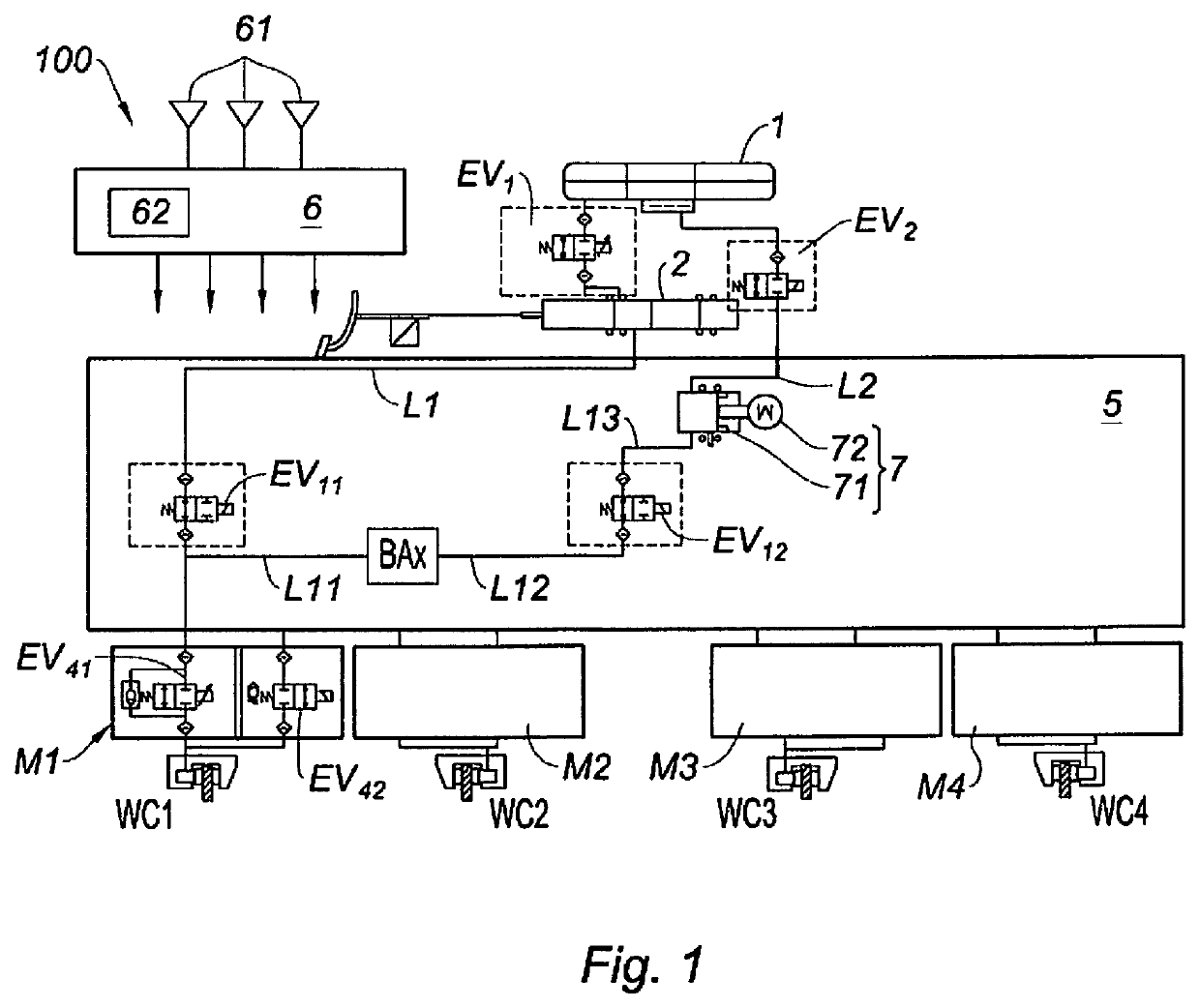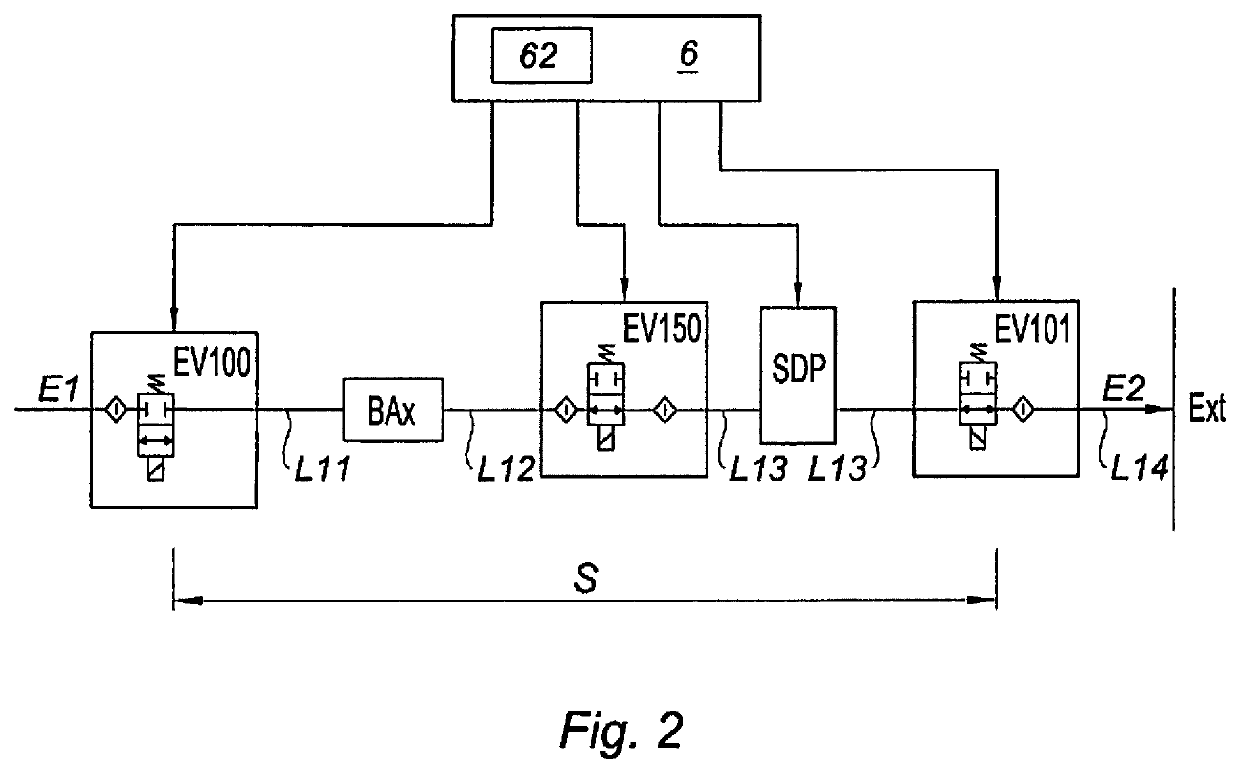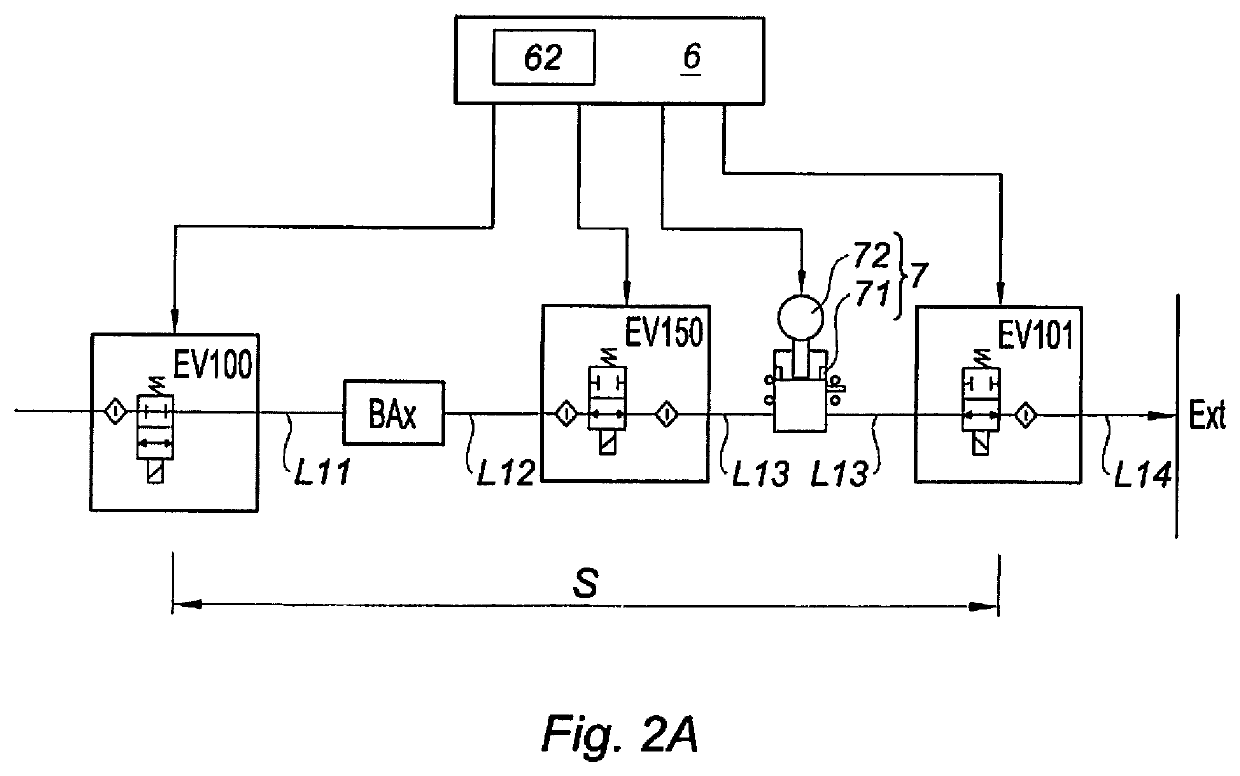Purge procedure for a decoupled brake system and brake system implementing this procedure
a brake system and purging device technology, applied in the direction of brake systems, vehicle sub-unit features, brake components, etc., can solve the problems of complex manufacturing of the different connections between the brake fluid reservoir and the wheel brake, the operation cannot be carried out in a factory or specially equipped workshop, and the decoupling brake system or circuit is becoming increasingly complex. to achieve the effect of effective and complete purging of the brake circui
- Summary
- Abstract
- Description
- Claims
- Application Information
AI Technical Summary
Benefits of technology
Problems solved by technology
Method used
Image
Examples
Embodiment Construction
[0025]According to FIG. 1, the invention relates to a decoupled brake system 100 to which is applied the purge procedure according to the invention. Brake system 100 consists of brake fluid reservoir 1 connected to wheel brakes WC1-WC4 by tandem master cylinder 2 and brake circuit 5, which distributes the brake fluid among wheel brakes WC1-WC4 by brake fluid pressurization pump 7 and a set of solenoid valves.
[0026]Wheel brakes WC1-WC4 are each represented by a brake caliper on the brake disc associated with the wheel, not shown, and having a hydraulic actuator. Wheel brakes WC1-WC4 are connected to circuit 5 by inlet modules M1-M4, enabling each wheel brake WC1-WC4 to be cut with respect to circuit 5.
[0027]Tandem master cylinder 2 is decoupled from brake pedal 3; it acts on wheel brakes WC1-WC4 only in the event of a failure of brake circuit 5, to then supply brake fluid at the pressure generated by the force alone exerted on brake pedal 3.
[0028]During normal operation, tandem maste...
PUM
 Login to View More
Login to View More Abstract
Description
Claims
Application Information
 Login to View More
Login to View More - R&D
- Intellectual Property
- Life Sciences
- Materials
- Tech Scout
- Unparalleled Data Quality
- Higher Quality Content
- 60% Fewer Hallucinations
Browse by: Latest US Patents, China's latest patents, Technical Efficacy Thesaurus, Application Domain, Technology Topic, Popular Technical Reports.
© 2025 PatSnap. All rights reserved.Legal|Privacy policy|Modern Slavery Act Transparency Statement|Sitemap|About US| Contact US: help@patsnap.com



